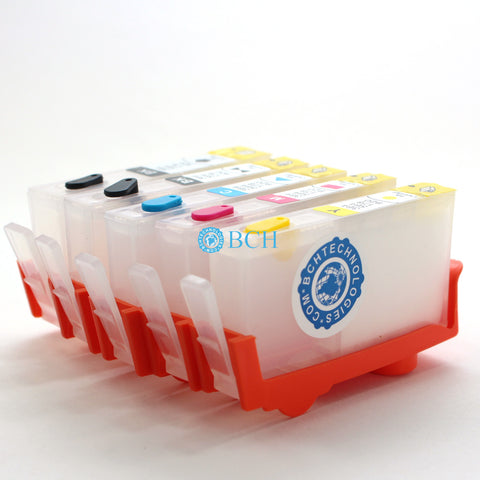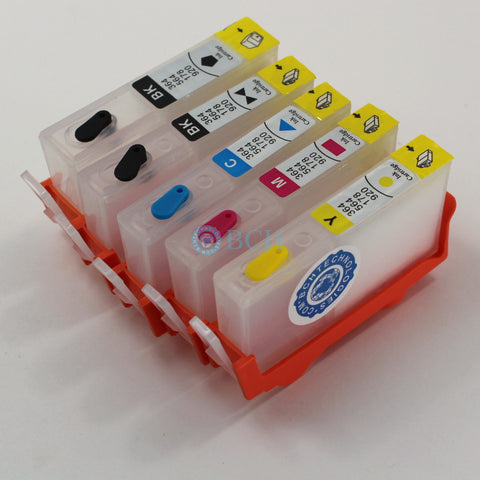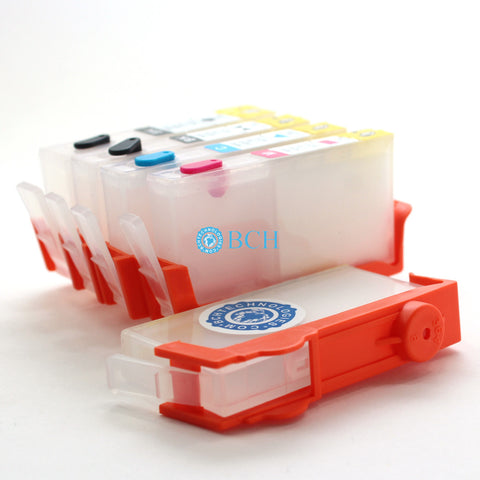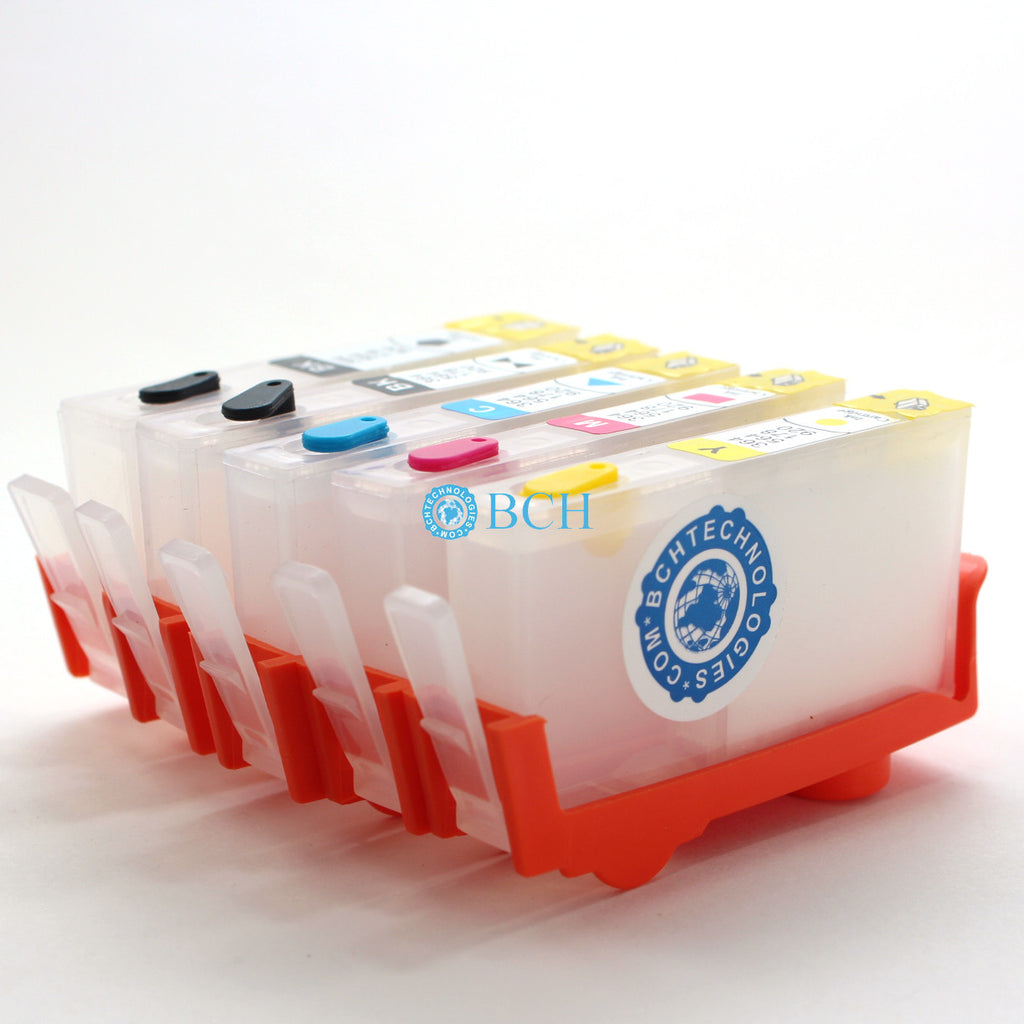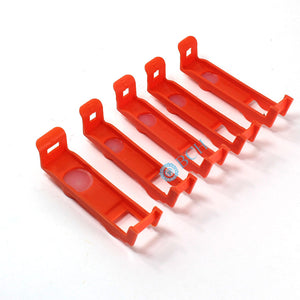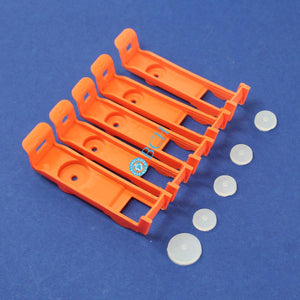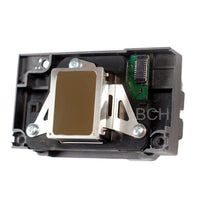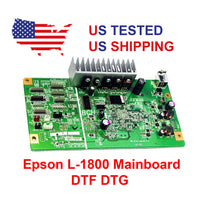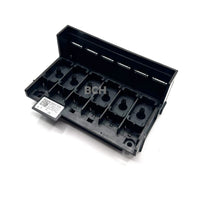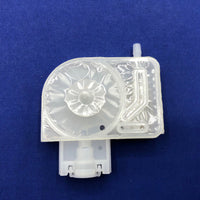
5 BLANK Refillable Cartridges for HP 178 364 564 920 902 934 935 Cartridges for Photosmart Series (No Chip)
$19.99
- These are blank cartridges (no ink, no chip).
- It will NOT work on your printer if you don't know how to use them.
Contents
- 1 Regular Black Refillable Cartridge Body.
- 1 of each: Photo Black, Cyan, Magenta, Yellow Body
We do not make the super-wide body, for example, 902XL, so you have to use regular black body
We do not have 4-pack. If you don't need the photo black, you can buy this but keep the extra cartridge as a spare.
Suggestions from our customers:
Bob (07/16/2018):
While that method works, to do it successfully and safely requires a good a bit of skill. It also occurs to me that most homes don’t have Dremel toolkits . Yet, it is important to your business that people be able to do this job conveniently and easily. With that in mind, I’d like to suggest the following revisions:
It is easier and safer to cut the chip loose with a hand saw than with a rotary tool. Especially if you have a bench vise to hold the cartridge while you do it (most home shops do). Just about any handsaw would do—even a hacksaw. But a razor saw (link) such as a Xacto X75300 (link) or a Zona 35-500 (link) would work especially well.
To more easily and safely thin and flatten the plastic on the back of the chip, first secure it to the narrow side of a piece of a wooden 2x4 with double-faced tape (contacts-side down), and clamp that in a bench vise. (If you have a vise; else you could secure it to your bench top with another piece of double-faced tape. Or just have someone hold it still on a table for you.)
Wrap a piece of ~150-grit sandpaper around the center section of a wooden paint stirrer. Grasp the stirrer by its two ends (like a spokeshave , link). Using your thumbs to keep the sandpaper from unwrapping, work the sandpaper back-and-forth over the plastic until it is as thin and flat as you want.
A few drops of a solvent (such as paint thinner, lighter fluid, WD-40, or oil) should help to ease the grip of the double-faced tape on the chip. Nail polish remover would work, too, but it might dissolve the plastic.
Also, it ought to be obvious to users that fastening the salvaged chips to the printer slots is a better solution than fastening them to refillable cartridges, since that enables one to use multiple cartridge sets without having to supply chips for every set. But it took me a while to realize this on my own. So, be sure to point that out in your next related video.
Here is an even better solution for thinning & flattening the plastic on the back of the chip:
Secure the chip, contacts down, to the center of the wide-side of a 1”x2" about 6” long with double-faced tape;
Tape a sheet of 150 grit sandpaper on a horizontal flat surface, face up;
Lay two popsicle-stick-like (link) spacers on the sandpaper, parallel to each other and about 4” apart, to act as runners. They should be the same thickness as you want the chips (including their plastic bases) to be when you are finished. If popsicle sticks are too thick, look for pieces of cardboard of the right thickness (perhaps two layers from a cereal box);
Orient the 1”x2” so that the chip faces the floor and its long axis is perpendicular to the spacers. Set it down straddling the spacers, so that chip base lies between the spacers and contacts the sandpaper. Now, rub it back and forth on the sandpaper until both ends of the 1”x2” ride on both spacers simultaneously.
Voila! You are done and the chip assembly is exactly the right thickness over its entire surface.
Anybody can do that quickly, safely, and successfully. (Note that the final thickness of the chip assembly can also be controlled by adding layers of tape between it and the 1”x2” or to the undersides of both runners.)
Related products
Complete Your Purchase
Categories
Add your product to the cart to view shipping rates. We've delivered to 289,762 customers in 149 countries.

Sign up for our newsletter to get weekly coupons and tips on printer refills and repairs.
Got a question? Don't hesitate to email us at support@bchtechnologies.com
Subscribe to Kevin's YouTube channel for the latest tips on printer repair and maintenance.
Recently viewed

I have an old Epson ET-2750 eco tank printer, which I have used for years, and since it is uses refillable ink tanks, have used very little ink over the years. I love this printer because I can print lots and lots of pages, including double-sided at very low cost, and it is very reliable. I recently had a paper jam, which is very unusual. When I took off the back panel to clear the jam, I accidentally dropped it on the floor, and when I replaced the back panel, the printer jammed every time I tried to print double-sided. I found a small plastic piece on the floor that fit on one end of the roller, but didn't realize I was missing the other end. I eventually noticed that there was a gear on the back panel next to where the roller fits into the panel. I deduced that I must be missing a gear to pop into the end of the roller, to mesh with the gear on the panel. I couldn't find the missing gear anywhere, and figured my cats must have lost it or my wife might have swept it up when sweeping the floor, and discarded it. Through a Google search, I found BCH Technologies, ordered the part from them, it fit perfectly, and now I can print double-sided again on my faithful old Epson printer. I very much appreciated being able to get the missing part from them. I thought the price for the part and shipping was high for such a small part, but that was the only down side.
Daniel Parker
Duplex Roller Feed Gear for Epson Printers

Best place for parts and accessories I ordered this print head carriage after watching a few bch videos wanted to fix and upgrade my cr encoder sensor while i was at it and i was not let down censor is original and whole assembly is new and never been used could not be happier thank you thanks Kevin!!
Josie Franco
New Genuine L1800 Printhead Carriage Return (CR) Unit

As always, great quality products, quick delivery and customer support that is top notch.
Shelley J Fenner
12V Peristaltic Pump for DTF/DTG Printers - White Ink Management System

